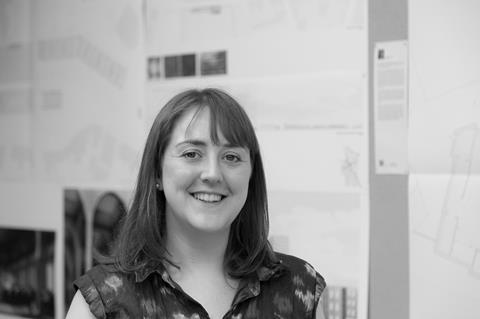The RIBA, schools and practices are all making the right noises about toxic studio culture. We owe it to each other not to let this drop, says Eleanor Jolliffe

On World Mental Health Day the RIBA hosted an evening of talks exploring the topic of mental health and architectural studies. This is a topic I won’t let drop, and I am encouraged that the RIBA is beginning to take it seriously. If this constructive dialogue continues, and RIBA president Ben Derbyshire follows through on his much-tweeted enthusiasm for education reform, we may be at a point where we are able to effect some real change for the better in our profession.
On the evening there were talks from educators, employers and a couple of very courageous young professionals willing to share their stories. Srimathi Aiyer, an architectural assistant at Mace spoke of her experience of studio culture at university – of the competitive atmosphere, and how “friends” melted away when she admitted she was struggling; of being scared to show work to tutors and about the turning point when she asked for support from a new source. She now lives by the motto, “Architecture should be about collaboration rather than competition” – a motto I hope infiltrates into the culture of the profession as a whole.
Emmanuel Owusu, now a surveyor at Ingleton Wood who achieved a first for his part I, bravely spoke of his experiences – how what started as anxiety and stress built into a psychosis that led to him being forcibly sectioned under the Mental Health Act 1983.
Satwinder Samra, director of collaborative practice at the Sheffield School of Architecture, compared the current architectural education system to “a very big horrible sausage machine” as those who were shamed through their training 20 or 30 years ago are now inflicting the same treatment on the next generation of students.
Samra spoke of the increasing pressure on students as a full architectural education comes to cost in the region of £100,000 plus interest. The price of failure or making a mistake is now so high that any minor setback can seem insurmountable. He is championing a new format of course at Sheffield where students can earn as they learn. He also promotes the idea that studios should close at 8pm, and then everyone should “go home and watch X Factor”. Sheffield’s position in the league tables (3rd in The Times 2017, 4th in the Guardian 2018 and a top 4 school in the QS World Rankings 2017) suggest this attitude is certainly not failing his students.
Laura Mansel-Thomas, a partner at Ingleton Wood, spoke from the employer’s perspective – of how the language around mental health was now “utterly different”, with those coming into the profession increasingly aware of their mental health and well-being. She spoke of the need of workplaces to “catch-up” – but of how this must be a two-way process: while employers should create a healthy environment it is down to the individual employee to have a responsibility for their own health and well-being.
Mansel-Thomas also spoke of how employers need to be careful of what they’re measuring when they consider success – and that they should be wary of measuring it as the person sitting at their desk for the longest time. At the same time she stressed the importance of each individual making sure they were applying to workplaces that fit with their ethos; as she pointed out some people are happy when working 50- to 60-hour weeks.
Again and again the terror of The Crit loomed across the speakers’ talks with Owusu remembering the way tutors “shut us down” and seemed to want to wound with their words rather than critique constructively. Samra remarked on the theatre of the Crit – how often the dialogue between the “gathering of dignitaries” on the front row comes to be the primary focus of these tense half hours, with the student and their work coming second. He is now trialling a set-up where tutors sit at the back – behind the other students – to orchestrate the dialogue rather than dictate.
Architecture is not an easy education, it is not an easy environment in which to fail, or admit you’re struggling – and I am not promoting the idea that we should “dumb down” architectural education to make it easy for everyone. I am not a “millennial snowflake” asking for a participation trophy for everyone. But as someone who has nearly completed this marathon of education I respectfully ask the profession to question the potentially toxic time-bomb we are complicit in allowing to be perpetuated in our schools.
The toxic effects of an unhealthy studio culture do not stop at graduation. They trickle through into the shared consciousness of a whole profession. Baby steps are being made but I don’t believe we are moving fast enough – or thinking creatively enough.
Two years ago, in September 2015, the RIBA launched an education review. Heralded at the time as “the biggest shake up in architectural education for 50 years” it has been slow to effect. However, with the increasing dialogue around the need for change, the almost unaffordable fees and the inevitable impact of Brexit negotiations on professional qualifications, it feels like the questions we should all be asking of the RIBA, the ARB and the universities are: If not now, when? If not us, who?
Postscript
Rob Ball from the Architects Benevolent Society highlighted a partnership with Anxiety UK that has enabled them to refer 30 people for counselling and support since May this year. Anyone who would like to be referred (confidentially) for this service should contact help@absnet.org.uk. More information here.
















11 Readers' comments